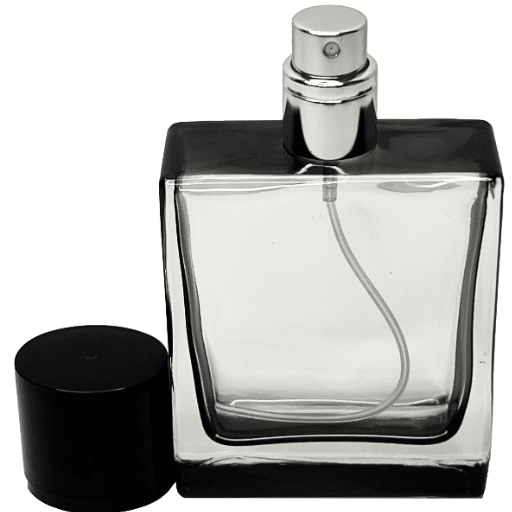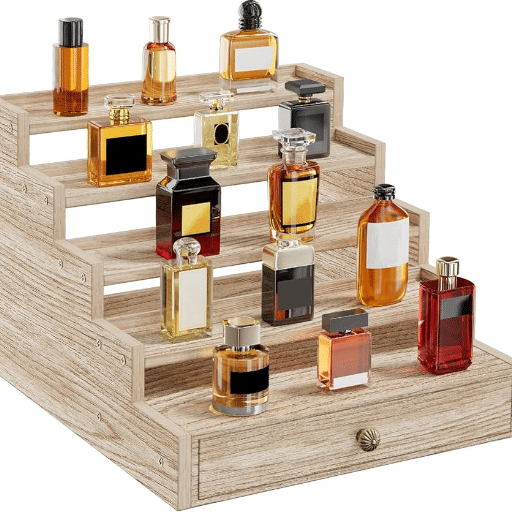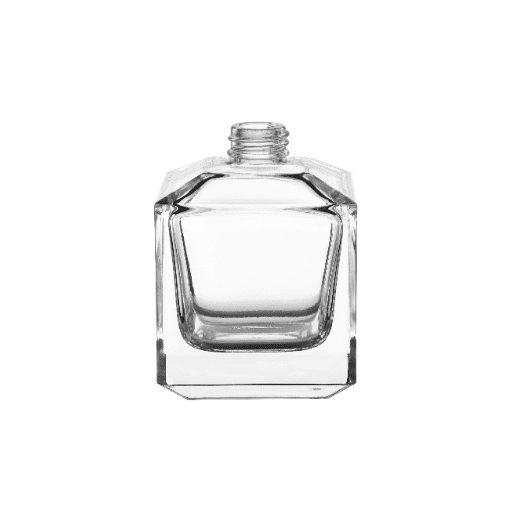Understanding the Problem: Types of Damage to Perfume Bottles
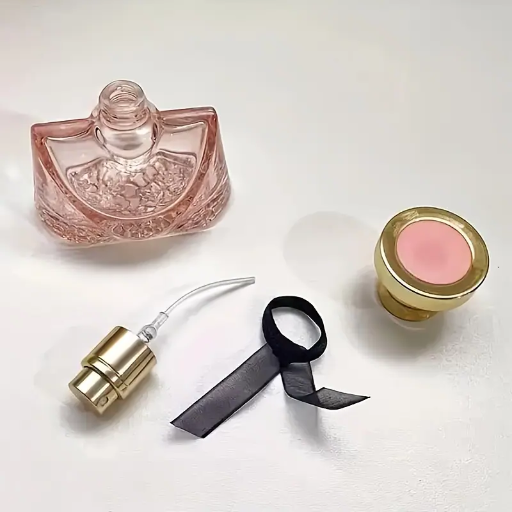
Perfume bottles can suffer from several common types of damage, which can affect their usability and preservation of the fragrance:
- Cracked or Broken Glass
This is one of the most visible and serious issues, caused by accidental drops or pressure. Cracks can lead to leakage and evaporation of the perfume. - Malfunctioning Spray Nozzle
Spray nozzles may become clogged or stop working entirely, often due to dirt buildup or manufacturing defects. This prevents proper application of the perfume. - Loose or Damaged Cap or Seal
A poorly fitting cap or a worn-out seal can expose the perfume to air, leading to evaporation and deterioration of the fragrance over time.
These issues not only impact the aesthetic appeal of the bottle but can also compromise the quality and longevity of the perfume itself.
Cracks and Chips in Glass Bottles
These damages result from several factors, from accidental dropping, improper handling, or a structural weakness in the design and manufacture of the bottle. A compromised bottle cannot provide a proper seal, thereby allowing its contents to evaporate and absorb moisture from the atmosphere; such changes would also affect the fragrance. Additionally, chips may pose a safety risk to consumers or detract from the packaging’s aesthetic, which is a significant part of the presentation for luxury perfume products. Thus, they must use high-quality, heavier glass materials and adhere to stringent design standards to prevent it; on the other hand, bottles must also be stored in secure, stable locations away from high-impact areas.
Leaks and Spills from Broken Spray Mechanisms
A defective spray mechanism can cause leakage, spills, product loss, and contamination of other surfaces. Usually, a spray mechanism can become clogged, its pump parts may be misaligned, or damage to the nozzle can occur due to improper handling. To solve these problems, manufacturers should use materials resistant to corrosion and have the spraying operation tested under stringent test conditions. They should also precisely engineer their production line. From the users’ perspective, regular cleaning of the nozzle, gentle handling, and checking for visual clues of wear and tear on the nozzle can help avert these problems. If you notice a leak, placing the bottle upright and transferring the remaining product into a hermetically sealed container can further minimize waste.
Issues with Broken Nozzles and Sprayers
Several regular causes have become the leading culprits for nozzle and sprayer failures. They are clogged with residues of the product, normal wear and tear on the sprayers from repeated use, damage caused by improper storage, such as injury due to extreme temperatures, or the use of poor-quality materials in manufacturing. Low-quality manufactured goods can go against any good work. To prevent clogging, the customer should perform periodic maintenance, such as flushing with warm water or a cleaning solution. Then, keep the products in a cool, dry place to ensure the sprayers remain in good condition and function properly.
Common Causes of Broken Perfume Bottles
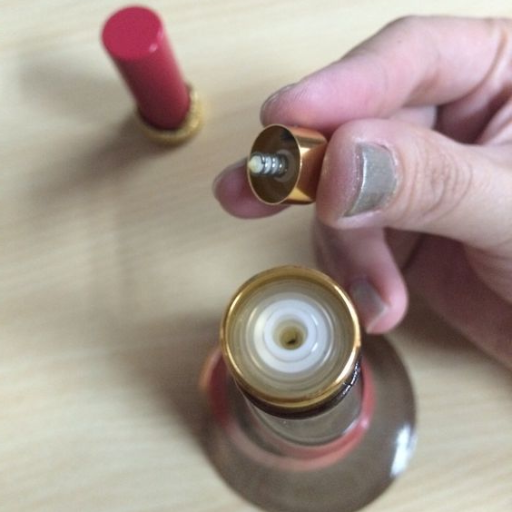
Broken bottles, by their very nature, involve a mixture of impact forces, material weaknesses, and bad handling. Few instances are more common than those of the bottle slipping down from a height onto a hard surface, whoever it may be, a hard blow goes into shattering the ground glass or plastic.” Bottles, if thin or made of cheap glass, can withstand no pressure; give it a little, and it becomes cracked or broken. Caps that are improperly aligned or tightened too much also stress the neck of the bottle and cause fractures. Conversely, exposure to extreme heat or cold temperatures causes materials to expand or contract, thereby weakening the structure further. All these risk factors are minimized when bottles are handled with care; such a care-taking process entails always storing bottles on flat surfaces and handling them with care.
Accidental Drops and Mishandling
Damage from accidental drops and mishandling is one of the primary reasons for the failure of glass bottles, as the impact force generated from dropping can exceed the material’s tolerance limit. When a bottle hits a hard surface, stress concentrations develop, which can begin to form cracks at areas of structural weakness, such as seams and edges. An ordinary act of mishandling, such as holding bottles by their thin necks without sufficient support, stacking bottles on top of one another without anything in between them, or applying uneven pressure to the bottles during transportation, will only increase their chance of getting damaged. Regularly inspecting for random chips or weaknesses, combined with the use of protective packaging or cushioning materials, will reduce the risk of damage due to falls and mishandling.
Improper Storage Practices
Unfavorable storage conditions certainly pose a threat to compromising the integrity and longevity of materials or products. Storing items in locations with fluctuating temperatures, high humidity, or direct sunlight weakens the strength properties of such items, leading to premature degradation. Considering bottles and glassware, an intense temperature variation can cause thermal expansion or contraction, thereby leading to cracking or fracturing. Additionally, an overcrowded storage room or improper stacking may subject delicate surfaces to undue pressure, thereby increasing the risk of damage or breakage. Stored out of choice from these suggestions, for instance, in controlled environments and with sufficient space for the objects, serves greatly in assuring durability and avoiding damage. Keeping a check on the storage conditions is yet another critical step in retaining the quality and usefulness of products stored in that environment.
Transporting Fragile Glass Containers
Handleglass containers require special considerations in preparation for transport to ensure they remain in the best condition possible, free from any damage. Proper cushioning and shock prevention remain primary considerations. Keeping the containers insulated from shock involves using special packing materials, such as layers of bubble wrap or foam inserts. Double boxing is an excellent method to provide additional protection. It consists of placing the primary box-wrapped item into a bigger box filled with cushioning.
It has recently been observed that variations in temperature during shipping can affect perfume quality. The containers are sealed within thermally insulated packaging to prevent exposure to adverse conditions that could compromise the basic scent profile and stability of the product. Additionally, labeling the package with “Fragile” or “Handle with Care” will help increase awareness among handling personnel and reduce the likelihood of mishandling.
Step-by-Step Repair Guide for Broken Perfume Bottles
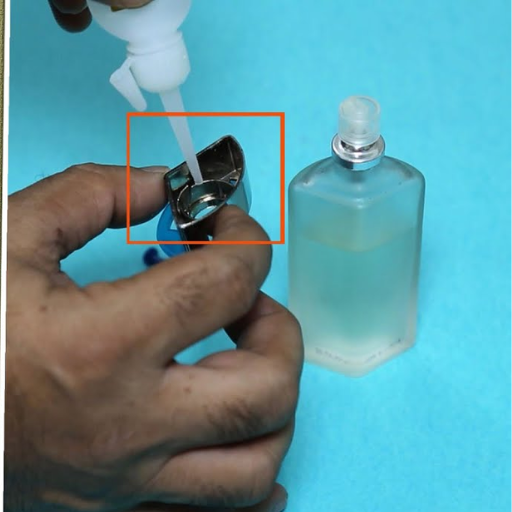
- Determine the Damage
Carefully examine the broken bottle to assess the extent of damage. Use gloves if the bottle has shattered and has sharp edges. Check if the issue is with the nozzle, cap, or glass container, as these components will be treated according to specific repair methods. - Salvage the Perfume
Pour the remaining liquid into a clean container. Use a small funnel or syringe to minimize spilling. A glass bottle should be chosen with a tight seal to prevent the scent from evaporating. - Seal the Crack or Chip
For small cracks, use a transparent glue or epoxy designed explicitly for glass repair. Let it cure completely for the time frame recommended by the manufacturer before use. - Replace the Atomizer
When a nozzle orifice or spray mechanism is damaged, remove and replace it with a suitable atomizer. Ensure the new atomizer is firmly attached to prevent leaks. - Clean the Area
Thoroughly clean any spilled perfume from the surface with a damp cloth, then place the broken glass pieces into a sealed container for proper disposal. - Prevent Further Damage
Ensure that perfume bottles are placed on stable surfaces, away from edges, or inside one of the many padded compartments. For travel purposes, alternative solutions that utilize reinforced or protective packaging should be considered to protect the bottle against breakage.
By following the steps mentioned, one can properly recover and repair a broken perfume bottle while maintaining the integrity of its contents.
Fixing Minor Cracks with Adhesive
Provided that minor cracks need to be repaired in a bottle, I would first ensure that the bottle is empty and well-washed before proceeding with the repair. I would use a clear, glass-safe adhesive such as cyanoacrylate or epoxy resin. The glue must be applied sparingly along the crack using a fine-tip applicator, ensuring no excess glue is present. The curing time of the glue should be allowed to follow the manufacturer’s instructions to obtain the best results. It is simply a temporary fix, as the bottle might leak again due to compromised structural integrity; thus, transferring the perfume from one bottle to another would be a safer long-term alternative.
Securing Loose Caps and Nozzles
Gently pressing down on a loose cap or twisting it so it is properly in position would be the best course of action. It could be an issue requiring utmost care if glue is involved, so care should be taken when using any adhesive. Spray nozzles can be removed, cleaned, and reinstalled. First, I would examine the cap or nozzle for visible damage such as cracks or deformation. If the cap is only loose, I will gently press it down or twist it to ensure it is in the correct position. For the nozzles, I’ll see if it is possible to reattach them securely to the bottle neck; if so, press them firmly into place. Unless the problem persists, I would then apply a small amount of clear adhesive, such as epoxy or silicone glue, to the joint, ensuring it never comes into contact with the perfume itself to avoid contamination. I guarantee that all work is completed with great care and that the adhesive is allowed to cure completely following the manufacturer’s instructions.
Replacing Broken Spray Mechanisms
Begin by carefully removing the spray assembly from a perfume bottle if the spray mechanism is broken. This may be done by twisting off the assembly. Otherwise, the assembly will need to be gently pried off. If the spray head is damaged but the pump is still working, a replacement spray head of the same size generally suffices. Make sure the size and threading of the replacement part match those of the bottle neck. If the pump mechanism itself needs to be replaced, a universal spray pump or a pump specifically designed for the brand of bottle should be purchased. Cleaning should be carried out on the bottle neck to remove any residue before the new mechanism is installed. Attach the new mechanism firmly by pressing it onto the neck or screwing it in, depending on the design. Ensure the spray works perfectly and keep an eye out for leaks.
Essential Tools for Repairing Perfume Bottles

The following essential tools need to be gathered to repair a perfume bottle correctly:
- Thin-tipped tweezers – For handling minuscule parts, such as the spray nozzle and sealing components.
- Small screwdrivers (set) – Helpful for disassembling the pump mechanism or making minor adjustments to components.
- Precision pliers – For firmly holding and manipulating tiny parts.
- Silicone sealant – To prevent any possible leaks in the bottle neck or pump.
- Microfiber cloths – To wipe clean without causing any scratches.
- Isopropyl alcohol – To remove all residues and sanitize the parts before reassembly.
These tools enable precise and efficient repairs that can further enhance the usability of your perfume bottle.
Types of Adhesives for Glass Repair
Choosing the correct type of adhesive is the most crucial aspect that ensures durability and a subtle finish for repairing perfume glass. Here are a few glue types most commonly recommended for glass repair:
- Epoxy – Are Two-Part Adhesives That Are Stronger Than Any Other Durable Bonds. Epoxy is perfect for Repairing Glass Cracks and fissures, as it stands up against wear and Tear. It Cures to a Clear Color, Enabling Visible Repair.
- UV-Curing Adhesive – This adhesive Adhesive-Cures Quickly When Exposed To UV Light, Ensuring Precision and Minimum Disruption; Having a Transparent Finish Makes It A Great Choice To Repair Delicate Or Fancy Bottles.
- Silicone-Based Adhesives – Flexible and Waterproof; These Adhesives Are Great for Sealing Joints or Securing Bottle Parts Without Affecting Their Structure.
Each of these adhesive types behaves differently under various repair conditions, which helps perfect every single repair. Ensure the glass is clean and dry before applying any adhesive for optimal results.
Replacement Parts for Perfume Sprayers
The availability of replacement parts almost doubles the life of your perfume sprayer bottle and guarantees its proper functioning. Among the most common replacement parts are:
- Nozzles – The fine mist emerges from these parts. Replacement is pruned in the case of uneven dispensing by the sprayer, due to clogs or wear.
- Pumps – Pumping with the perfume generates pressure for perfuming. A pump that does not perform properly or is too stiff to operate properly should be replaced.
- Straws/Dip Tubes – Tubes draw liquid perfume from the bottom of the bottle to the nozzle. Replacing the tube will resolve any dispensing issues if the tube is cracked or broken, or if it is the incorrect length.
- Collars – Collars hold the sprayer to the bottle and prevent leaks. When damaged or loose, replace the collar for a snug fit and avoid any unnecessary spillage.
Any of these parts is necessary when replacing the functional perfume sprayer. Ensure that you end up with a part that fits your bottle design with the minimum amount of assembly required.
Tools for Transferring Remaining Fragrance Safely
For a safe transfer of the remaining fragrance, I suggest using a small, sterilized funnel or a specially designed transfer tool for perfumes. While funnels help prevent spills by directing the liquid straight into the container, specific transfer tools, such as syringe-style pipettes, allow for better control of the process. Also, confirm that everything is clean and dry, whether the instruments themselves or the container they are in, to avoid contamination. They work well, are easily found, and will help you maintain the bottle’s fragrance.
Creative Alternatives: Repurposing Broken Perfume Bottles
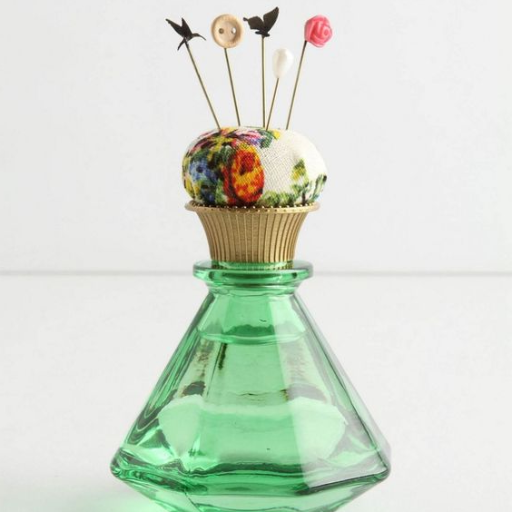
One may consider creatively repurposing perfume bottles rather than discarding them. If a specific part of the perfume bottle remains intact, such as the base or neck, it can be used to create a decorative vase or a tealight holder. The remaining perfume could be poured into smaller travel-sized atomizers to prevent waste, or it could be sprinkled onto cotton balls or sachets to freshen linens, drawers, or closets. These solutions help redistribute use without compromising on the sentimental value or aesthetic appeal of the bottle itself.
Upcycling Ideas for Decorative Crafts
As creative, in many ways, perfume sprayers can become decorative items. One popular option is to clean and refill the sprayer with a homemade room mist or an essential oil blend for use as décor. The other option is to remove the spray attachment and mechanism that fits onto the bottle, allowing one to use the bottle as a flower vase or as an injection mold for a miniature terrarium. It’s also fun to paint or decorate the bottle to create unique centerpieces or ornaments. These upcycling methods reduce waste by diverting items from local disposal sites and aligning with sustainable methods.
Using Broken Bottles as Vases or Art Pieces
When repurposing broken perfume bottles, all focus goes to their aesthetic side for unique decoration. They are carefully secured against sharp edges and transformed with utmost safety into small flower or succulent vases. Another great way to make them an art piece is to fill them with sand, beads, or lights. This can then be personalized by painting, tying ribbons, or glamorizing with any kind of adornment. This allows for the expression of creativity while simultaneously reducing waste, thereby moving towards sustainable living.
Safely Transferring Fragrance to New Containers
Pour the fragrance gently to avoid any unwanted spillage. Also, keep in mind that fumes and air might spoil the scent, so exposure of the fragrance to air should always be minimal. The sight of lovely glass bottles decorating any dresser, but the beauty of the glass or bottle sits alone when you do not fill it with the scent it represents; thus, fragrance must be stored in a calm and dark place. If it is a small bottle with a spray, consider drawing the fragrance out with a pipette or dropper, allowing you to pour it in comfortably. Always remember that after transference, the receptacle must be closed immediately to prevent the loss of aroma and quality. This method would preserve the most fragrance and prevent it from evaporating or becoming contaminated.
Reference Sources
-
Jars King: How to Fix a Perfume Bottle That Won’t Spray: Easy Solutions – This article provides practical solutions, including the hot water method, to fix perfume bottles.
-
iFixit: How to Repair a Jammed Nozzle on a Perfume Bottle – A step-by-step guide on repairing jammed nozzles, especially for glass bottles.
-
YouTube: How I Replace a Broken Bottle of Perfume – A video tutorial demonstrating how to transfer perfume from a broken bottle to a new one.
-
TikTok: How to Fix a Broken Perfume Spray Nozzle Easily – A quick video guide on replacing a broken spray nozzle.
Frequently Asked Questions (FAQs)
How to fix a broken perfume bottle that won’t spray anymore?
If your perfume bottle refuses to spray, deviate into the realm of physical checks for a clogged nozzle. Unscrew the nozzle from the bottle and check it for any blockage or perfume residue. You may need to soak it in hot, running water or rubbing alcohol to dissolve any clogging particles. If the nozzle still does not work, consider replacing it with a new one or a compatible sprayer.
What are the common reasons for a clogged spray nozzle?
It is essentially the blockage caused by the buildup of perfume residue that obstructs the flow of liquid perfume, thereby clogging the perfume spray nozzle. Other reasons can also encompass air bubbles trapped in the spray tube or a faulty spray mechanism. If you maintain your perfume bottle regularly and store it correctly, you can avoid these issues.
Can I transfer my favorite perfume into a new bottle?
Yes, you can decant a favorite scent into any new bottle. It essentially means carefully transferring liquid perfume from its standard, tall bottle into a refillable glass container or vial. You must ensure that you clean the new bottle thoroughly to preserve the perfume’s natural scent and prevent the mixing of scents.
What can I do if my perfume bottle has a broken perfume nozzle?
If you gaze upon your broken nozzle, the first thing to try is to gently unscrew the fractured nozzle from your bottle. Should it refuse to give in, take a firm grip on the nozzle using the pliers, then attempt to turn it in the opposite direction to the way it was set down. After it has finally come off, one can replace it with other nozzles that fit the spray mechanism of your bottle.
How can I get my perfume spray bottle working again?
Keep the perfume spray bottle under its original outer packaging while storing the liquid perfume in it. This ensures that the spray bottle continues to function well.
How do I restore uneven spraying issues?
Uneven spraying issues are generally resolved by checking the nozzle alignment and any possible hindrance in the spray tube. Try gently twisting the nozzle so it locks into position. If the problem persists even then, clean the nozzle or replace it with a new dispenser that is compatible with the bottle.

